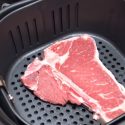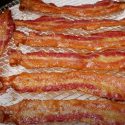How To Grill Chestnuts
How To Grill Chestnuts
How To Grill Chestnuts? Grilling chestnuts is a relatively simple process. Check out our guide on how to grill chestnuts over hot coals or in the oven. It’s a treat to cook or eat chestnuts if you’ve never done so before. They taste wonderful when freshly roasted. To prepare them and cook them, you’ve got to go through a few hard or moldy chestnuts, but it’s worth it.
Using An Oven To Roast Chestnuts
You can roast chestnuts in an oven quite easily. Arrange the prepared chestnuts on a sheet pan with the X facing up, and roast them at 425°F until they smell nutty and begin to peel away from the pan.
You can roast chestnuts for 15-20 minutes with the largely imported chestnuts. For the smaller local chestnuts, however, you only need 7-10 minutes. To find out how long the chestnuts should be cooked in your oven, a bit of trial and error is required. You should cook just a few at a time to prevent ruining the whole batch.
A chestnut is cooked when it smells nutty and is hot to the touch. You can return underdone chestnuts to the oven for a few more minutes if needed. Let the warm chestnuts cool slightly and peel. You want to avoid overcooking your chestnuts. The overcooked pieces will be so hard they will look like pieces on a checkers board.
Overcooked chestnuts will look black when they come out of the oven. You should only roast the chestnuts outside over coals or fire if you want the shells to be dark.
Roasting Chestnuts Over An Open Fire To Grill Chestnuts
Holiday treats that many people enjoy are chestnuts. Few people know how to prepare chestnuts. To cook the chestnuts at a high, intense temperature to make them sweet, you need a high flame. You probably already have the perfect cooking equipment on your patio, the grill. The heat will be sufficient to cook chestnuts perfectly, whether it is gas or charcoal.
Step 1. Prepping the Chestnuts
Check the chestnuts carefully and throw away any that are cracked, moldy, or rattling. If the chestnuts are dried out, the nuts will rattle like they have a marble inside. They are not good, so throw them away.
Step 2. Washing the Chestnuts
Give the chestnuts a good rinse before putting them on the grill. As they roast, the charring will be reduced, and the shells will become more pliable when it comes time to peel the nuts later. Furthermore, the roasting will wash away any remaining dirt and dust.
After rinsing the chestnuts, lightly dry them with a paper towel. Cut the chestnuts next. It is common for chestnuts to pop on an open fire, but you do not want them to pop too much. You will need to cut a small X in the chestnut’s shell to prevent them from literally exploding when they cook. Any place on the nut can be pierced using a paring knife.
Step 3. Grilling the Chestnuts
Prepare your grill by heating it to 400 degrees. Put the chestnuts into a grill basket, grill wok, or pie tin with holes punched in the bottom and they won’t fall through the grate. Alternatively, you can put the chestnuts directly on the cooking grate.
The average cooking time is 15 minutes, but keep an eye on them to prevent burning. On the grill, turn the chestnuts every 5 minutes to ensure they cook evenly and the shells don’t burn. It can be done on either a gas grill or a charcoal grill. Make sure you keep the temperature close to 400 degrees Fahrenheit when you grill. How To Grill Chestnuts?
Step 4. The Chestnuts Are Done To Grill Chestnuts
It takes about 15 minutes to cook chestnuts. When properly cooked, chestnuts taste slightly sweet and buttery, as opposed to being bitter when underdone. Whenever the chestnut shells have a bit of charring and the X is visible inside, the chestnut is ready. You should let the chestnuts cool until you can handle them comfortably after they have been grilled.
Step 5. Shearing The Chestnuts And To Grill Chestnuts
You need to take the chestnuts out of their shells once they have cooled sufficiently. You want the chestnuts’ shells to be hard and breakable. Pull open the shells and remove the meat using a cut X. The nuts can be eaten right from the shell or incorporated into a variety of dishes, such as stuffings, soups, and puddings.
Conclusion
There is no one correct way to roast chestnuts. That is because every chestnut is different. Different chestnuts have different sizes, some have membranes that go through the flesh or the nut, and it can be difficult to tell how old they are. Try one small batch at a time, and you’ll soon figure out what is most suitable for your region’s chestnuts.








